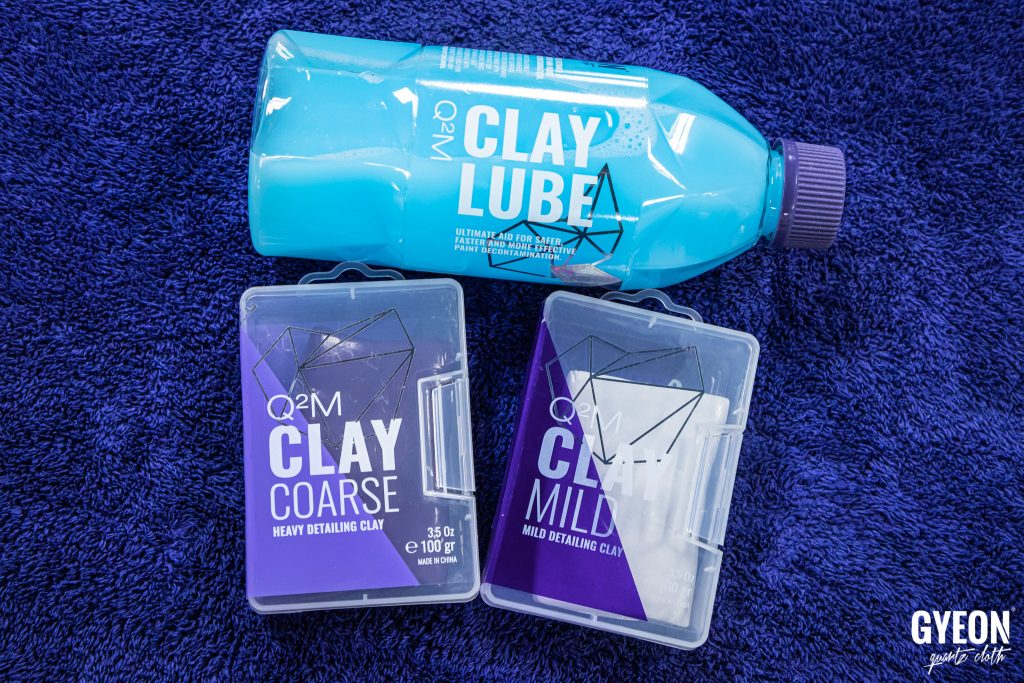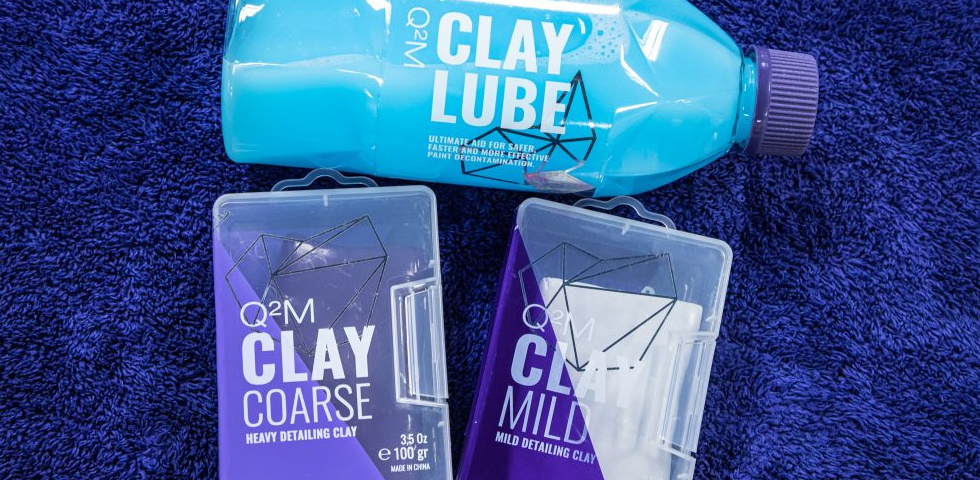This article is written by Jeff McEachan, National Brand Manager at Gyeon quartz USA and Owner of Denver Auto Shield.
Detailing clay is always a hot topic and a very important part of the detailing process. Gyeon quartz produces fantastic solutions in the decontamination category of products, so let’s take a deeper look at claying.

What is a Clay Bar?
A detailing clay bar is a synthetic resin mixture designed to remove contaminants from automotive finishes. They can be stretched, and molded, and are soft enough to move over the intricate design of automotive panels without damaging the paint. Clay bars are produced in different “grades” from Mild to Coarse. The more the contaminated the paint the more aggressive the clay to be used to remove it.
Why Clay Your Car?
From the very second, your car is painted, that paint is exposed to our natural environment. And our environment is filled with air born pollutants, called environmental fallout. These pollutants consist of brake dust, industrial pollution, bird droppings, bug guts, road grime, overspray, and anything else that can land on your car as a contaminant.
How Does a Clay Bar Work?
The clay bar, being a soft and tacky material will grab on and remove the embedded contaminants that your chemical wash and decontamination could not remove. It should be done after the initial washing phase and prior to polishing the paint. Its main purpose is to fully decontaminate a surface before long term protection is applied.
Can You Clay Bar a Ceramic Coated Car?
Can you? Yes. But the question is usually, should you? The danger in claying a ceramic coated finish is the introduction of small scratches called marring. With a proper clay lube, a quality clay, a mildly contaminated surface, and good technique you can indeed clay without marring. But it is tough. The second the clay bar loads up with contaminants you will likely be marring the paint. And the issue with marring is that you don’t want to polish a coated finish unless you absolutely have to as you will likely remove the coating. So on a coated car, we would want to chemically decontaminate with Iron or Tar instead of claying when possible.
Gyeon quartz Q²M ClayMild, Q²M ClayCoarse, and Q²M ClayLube
Gyeon quartz produces two clay bars with different levels of contamination removal – the Q²M ClayCoarse for heavily contaminated surfaces and the gentler Q²M ClayMild for less contaminated surfaces. Both Gyeon clay bars are extremely chemical resistant and can be used with Q²M Iron or Q²M Tar, as well as with our highly concentrated and slick Q²M ClayLube.
How To Use Gyeon quartz Q²M ClayMild and Q²M ClayCoarse
Step 1: Make sure you have a very clean surface so that you aren’t moving contaminant across the finish and scratching it.
Step 2: Open you detailing clay and tear of a piece large enough that you can kneed into a half-dollar sized circle.
Step 3: Spray a bit of ClayLube on to the clay, as well as the panel to be decontaminated. I like to work in small controllable sections. It is easy to go too fast when claying. I like to hang my fingers just over the edge of the clay so I can feel any rough spots.
Step 4: Work the clay in straight line motions until the finish feels perfectly smooth. After each section, check your clay to see how many contaminants you are collecting and kneed it again to make sure you don’t have an overload of contaminants.
We are working on a VERY contaminated Ford Mustang here, so plenty was removed with the Mild clay. The ClayCoarse removed even more, but tougher to see given the purple color.
Step 5: Wash the car again when complete, dry it and move on to the polishing stage. That’s it!
